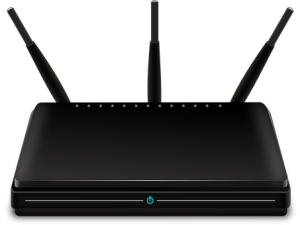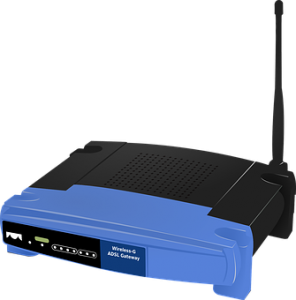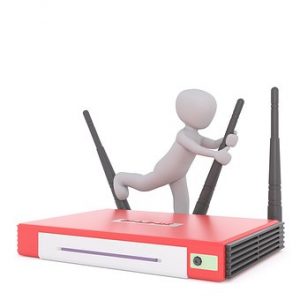Fixing TP Link Router Not Connecting to Internet
In today’s world, a reliable internet connection is crucial for personal and professional use. However, it is problematic when your TP-Link router not connecting to Internet or repeatedly disconnecting. In this blog, we’ll discuss the common causes of TP link keeps disconnecting issues and provide solutions to fix them.
TP-Link Router Not Connecting to the Internet: Reasons and Fixes
When the TP link router not connecting to the Internet, many factors can occur such issues. Below mentioned sources are enough to state why your TP link Router Keeps Disconnecting from Internet
Defective Wires
Defect or damaged wires are among the highly typical connectivity issues in TP Link routers. A damaged wire can prevent the router from receiving a stable internet connection, leading to intermittent or TP Link Router Not Connecting to Internet. You need to check all the wires connected to the router. The cables are not loose and are securely plugged into their respective ports. Unplug cables and plug them back in properly if the wires are loose.
- It’s also essential to examine the wires’ physical condition and look for any signs of damage, such as cuts, nicks, or breaks. If you spot any damages, consider replacing the cable with a new one.
- Another factor to keep in mind is the quality of the cables. Poor quality cables can be prone to damage and result in TP-Link Router Keeps Disconnecting from the Internet. So, ensure you use high-quality wires designed for the specific purpose and have the appropriate specifications.
- By checking and replacing damaged wires and using high-quality cables, you can ensure that your TP-Link router has a stable internet connection and avoid TP Link Router Not Connecting to Internet issues.
Inappropriate Alignment
Another potential reason why TP Link Router Keeps disconnecting from Internet is due to inappropriate alignment settings. The alignment settings of your router play a crucial role in ensuring a stable and reliable internet connection.
- When your router is not appropriately aligned, it can result in poor signal strength and coverage, leading to disconnections and slow internet speeds. Therefore, it is essential to double-check your router’s alignment settings and make sure they are configured correctly.
- To check the alignment settings, you can visit the router’s web interface by typing its IP address in your web browser. Once you log in, navigate to the wireless settings section and check the signal strength and coverage area. Ensure the router is placed in an open space and not obstructed by any objects or walls.
- In addition to that, you should also check the channel settings of your router. A heavily congested channel can cause interference and result in poor signal strength. Therefore, selecting a less congested channel with better signal quality is essential.
- When you check and adjust the router’s alignment settings, you can ensure that your TP-Link router has a steady internet connection and avoid TP Link Keeps Disconnecting from the Internet error.
IP Address Friction
An IP address might clash if numerous pieces of equipment are linked to the router. You can assign static IP addresses to your devices or enable DHCP (Dynamic Host Configuration Proto) to allocate IP addresses to connected devices habitually
- An IP Address clash is also a root cause for TP Link Router not working. IP addresses are inimitable identifiers that let devices interconnect with each other on a network. IP addresses can clash when several gadgets are linked into a single router, leading to problems.
- One way to resolve this issue is to assign static IP addresses to your devices. You can ensure no clash by assigning a specific IP address to each device. You must access your router’s web interface and navigate to the DHCP settings section to do this. From there, you can assign a static IP address to each device by specifying a unique IP address.
- Alternatively, you can enable DHCP on your router. DHCP (Dynamic Host Configuration Protocol) is a network protocol that automatically assigns IP addresses to devices connected to a network. Your router automatically allocates IP addresses to connected devices by enabling DHCP, ensuring no IP address turmoil.
- Access your router’s web interface and navigate to the DHCP settings section to enable DHCP. From there, you can turn on DHCP and specify the range of IP addresses your router can allocate to connected devices.
- It’s worth noting that while assigning static IP addresses can help avoid IP address dispensation, it can be time-consuming and requires technical knowledge. DHCP is a more straightforward and efficient way of allocating IP addresses to connected devices, especially for non-technical users. IP address friction is a generic problem for TP-Link routers, but it’s quickly resolved by assigning static IP addresses or enabling DHCP. By taking these steps, you can ensure that your devices can communicate with each other without any TP Link Router Not Connecting to Internet problems.
Firmware Update
To maintain optimal performance and resolve TP Link Router Keeps Disconnecting from Internet issues with your router, it’s important to update its firmware. Log into the router’s web-based interface and access the System Tools > Firmware Upgrade section. You can check for available updates and download the latest version from there. It’s crucial to be patient during the update process and avoid interrupting it. Keeping your router’s firmware up to date is essential for ensuring its security and optimal functionality.
Positioning
The router’s position can affect its connectivity. Ensure your router is placed in a central location and away from obstructions.
Overheating
Overheating can also cause connectivity issues. Keep the router in a well-ventilated area and ensure it doesn’t get too hot. Which helps in troubleshooting TP link not connecting to internet problem.
Wireless Interference
Wireless interference from other devices or neighboring networks can also cause disconnections. Switch the router to a different wireless channel to avoid interference and fix the TP link not connecting to internet error.
Antenna Orientation
Ensure the router’s antennas are adequately oriented and adjusted for optimal signal strength. It might rectify the TP link not connecting to internet issue.
Weak Wi-Fi Signal
A weak Wi-Fi signal can cause disconnections. Check your router’s settings and ensure it’s configured for optimal signal strength.
Faulty Router
In some cases, the router itself might be defective. Try resetting the router to its factory default settings by pressing and holding the reset button for 10 seconds.
Conclusion
TP Link Router keeps disconnecting from Internet, which is a typical problem, but you can solve it quickly by implementing the abovementioned tricks. Preserve in your brain that if the router is not linking to the Internet or it keeps disconnecting, you must contact third-party router support and keep reading the TP link support article for detailed information and solutions.


